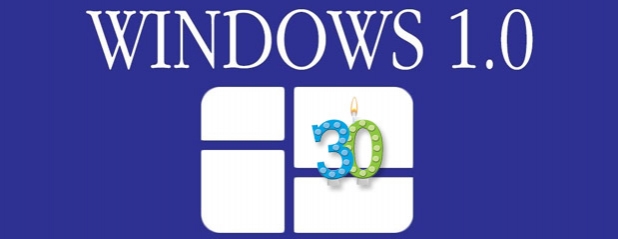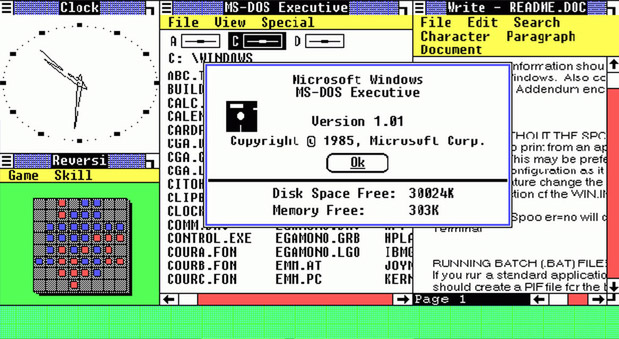From Windows 1.0 to 10 – Microsoft Celebrates 30 Years of Windows

It’s been 30 years since Microsoft unveiled its first version of Microsoft Windows with Windows 1.0. Whilst not the version we all remember, the operating environment offered a graphical user interface that could run graphical programmes made for Windows as well as run software made for MS-DOS too.
Whilst not technically an operating system, Windows 1.0 acted as a masking shell on top of MS-DOS which would provide a point and click, graphical environment due to its support of mouse input and included drivers for video cards. It also offered limited multi-tasking and came with programs and utilities we still use on our machines today including Notepad, Calculator and Paint.

Microsoft’s first iteration of Windows didn’t go too smoothly with reviewers and consumers criticising the demanding system requirements and how it relied too heavily on the mouse which was a new concept at the time. Despite receiving a mixed reception and being considered as a flop, Windows 1.0 marked an important milestone not just for Microsoft but for computing overall.
Windows was eventually succeeded by Windows 2.0 on December 9th 1987 which featured window overlapping, better graphic support and the introduction of Minimize and Maximise. Despite Apple agreeing to license certain aspects of its GUI to use in Windows 1.0, the introduction of some of the features in 2.0 caused Apple to file suit due to the similarities in the look and feel. This is often considered the true beginning of the PC vs Mac rivalry that is still ongoing even today!
It wasn’t until Microsoft released Windows 3.0 in 1990 and then 3.1 in 1992 that they saw their first success for Windows both commercially and critically. Greater performance, improved memory management, CD-ROM support and a vastly improved user interface. This is the version that most Windows users will remember and recognise as it was embedded onto many devices and workstations.
From there on the Windows line of operating systems kept evolving and progressively increasing its market share across desktop computers which would eventually make Microsoft one of the most powerful, successful companies in the world and Windows the most widely used operating system for the next 20 years and beyond. Other notable versions of Windows include Windows 95 with it's introduction of the popular Start Menu, a feature that's been prominent in almost every version since with the exception of Windows 8.
Windows XP saw a fresh, new and intitive look to the user interface but still remained faithful to it's predessors. Performance was greater, security was improved and was a major advance from the MS-DOS based operating systems, Windows 95, 98 and ME. Windows XP sold over 400 million copies in it's first years of avalability and was still popular even after newer versions of Windows were released including Vista.
Today Windows still dominates the overall desktop operating system market share with Windows 7 taking up over 55%. With the recent release of Windows 10 slowly gaining momentum due to it's free upgrade and overall improvement over Windows 8.1 it seems Microsoft hasn't lost it's touch despite increased competition.
Happy Birthday Windows!
